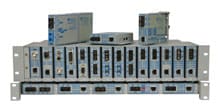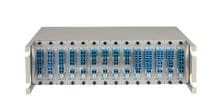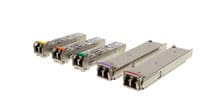- Products
- PoE Media Converters and Switches
- Ethernet & PoE Switches Product Selector
- Multi-Gigabit Ethernet and PoE Switches
- PoE PSE Commercial Switches
- PoE PSE Industrial Fiber Switches
- PoE Industrial Copper Extenders
- PoE Powered Media Converters
- PoE PSE Media Converters
- PoE Extenders & Injectors Product Selector
- Pluggable Transceivers Product Selector
- Single Pair PoE Products
- Product Lines
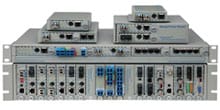
- iConverter Managed Multi-service Platform
- Copper to Fiber Media Converters
- Ethernet Media Converters
- 10 Gigabit Copper-to-Fiber
- 10/100/1000 Copper to 10 Gigabit Fiber
- 10/100/1000 Copper-to-Fiber with Integrated Management
- 10/100/1000 Industrial Copper-to-Fiber with Integrated Management
- 10/100/1000 Copper-to-Fiber with VLAN
- 10/100/1000 Dual Media Converter with VLAN
- Gigabit Copper-to-Fiber
- 10/100 Copper-to-Fiber with Integrated Management
- 10/100 Industrial Copper-to-Fiber with Integrated Management
- 10/100 Copper-to-Fiber with VLAN
- 10/100 Copper-to-Fiber
- Fast Ethernet Copper-to-Fiber
- Fast Ethernet Redundant Links
- 10Mbps Copper-to-Fiber
- 10Mbps Copper to Coax
- TDM Media Converters
- Serial Media Converters
- Ethernet Media Converters
- Fiber to Fiber Media Converters
- 10 Gigabit Fiber-to-Fiber Converter and Transponder
- 10 Gigabit Industrial Converter and Transponder
- SFP-to-SFP Fiber Converter and Transponder
- SFP-to-SFP Industrial Fiber Converter and Transponder
- Gigabit Fiber to-Fiber with 3 Rs
- 100/1000 Fiber-to-Fiber with 3 Rs
- Gigabit Fiber-to-Fiber
- Fast Ethernet Fiber-to-Fiber with 3 Rs
- Fast Ethernet Fiber-to-Fiber
- OC-3/STM-1 Fiber-to-Fiber
- OC-12/STM-4 Fiber-to-Fiber
- Carrier Ethernet Network Interface Devices
- CE 2.0 - 10G Demarcation NID
- CE 2.0 - 10G Demarcation and Aggregation NID
- CE 2.0 - 10/100/1000 Mult-port NID
- CE 2.0 - 10/100/1000 Mult-port NID with PoE
- CE 2.0 - 10/100/1000 8-Port NID
- SFP NID - Gigabit SFP NID
- microNID - 100/1000 compact NID
- CE 1.0 Service OAM - 10/100/1000 NID
- CE 1.0 Link OAM - 10/100/1000 Copper-to-Fiber NID
- CE 1.0 Link OAM - 10/100 Copper-to-Fiber NID
- CE 1.0 Link OAM - Gigabit Fiber-to-Fiber NID
- CE 1.0 Link OAM - Fast Ethernet Fiber-to-Fiber NID
- CWDM Multiplexers
- T1/E1 Multiplexers
- Ethernet Switch Modules
- Management System
- Chassis Options

- 1-Module Industrial Chassis
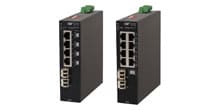
- RuggedNet Industrial Switches and Extenders
- Industrial PoE PSE Fiber Switches
- Multi-Gigabit Managed Industrial PoE+/BT Switches
- Multi-Gigabit Unmanaged Industrial PoE+/BT Switches
- 10G Managed 802.3bt PoE Switches
- 10G Unmanaged 802.3bt PoE Switches
- 10G Managed PoE+ Switches
- 10G Unmanaged PoE+ Switches
- 1G Managed PoE+ Switches
- 1G Unmanaged PoE+ Switches
- 1G Unmanaged 802.3bt PoE Switches
- 1G Managed 802.3bt PoE Switches
- Industrial SPE Switches
- Industrial Ethernet Switches
- Industrial PoE Copper Extenders
- Industrial Power Supplies

- OmniConverter Media Converter, Switches and Extenders
- PoE PSE Media Converters
- 10G Multi-Gigabit / Multi-Rate PoE Media Converter
- 10G Multi-Gigabit / Multi-Rate Media Converter
- 10/100 Multi-port PoE+ Media Converter
- 10/100 PoE+ Media Converter
- 10/100/1000 Multi-Port PoE+ Media Converter
- Industrial 10/100/1000 Multi-Port PoE+ Media Converter
- 10/100/1000 PoE+ Media Converter
- 10/100/1000 PoE++ 60W-100W Media Converter
- Industrial 10/100 Multi-port PoE+ Media Converter
- 1U Rack-Mount Shelf
- PoE PSE Compact Switches
- Multi-Gigabit Managed PoE+/BT Switches
- Multi-Gigabit Unmanaged PoE+/BT Switches
- 10G Managed 802.3bt PoE Switches
- 10G Unmanaged 802.3bt PoE Switches
- 10G Managed PoE+ Switches
- 10G Unmanaged PoE+ Switches
- 1G Managed PoE+ Switches
- 1G Unmanaged PoE+ Switches
- 1G Managed 802.3bt PoE Switches
- 1G Unmanaged 802.3bt PoE Switches
- Ethernet Switches
- PoE Copper Extenders
- Single Pair Ethernet (SPE)
- PoE Injectors
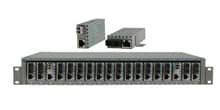
- miConverter Unmanaged Miniature Media Converters
- 10/100/1000 Copper-to-Fiber
- Industrial 10/100/1000 Copper-to-Fiber
- 10/100/1000 Ultra-Compact Copper-to-Fiber
- Gigabit Copper-to-Fiber
- 10/100/1000 Copper-to-Fiber PoE Powered
- 10/100 Copper-to-Fiber
- 10/100 Ultra-Compact Copper-to-Fiber
- 10/100 Copper-to-Fiber PoE Powered
- 18-Module Chassis
- Industrial 10/100 Copper-to-Fiber PoE Powered
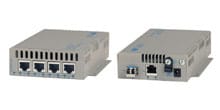
- FlexSwitch Compact Switches
- Solutions
- Company
- Support
- How to Buy
Single-Mode vs. Multimode Fiber Cable: A Direct Comparison of Features and Cost
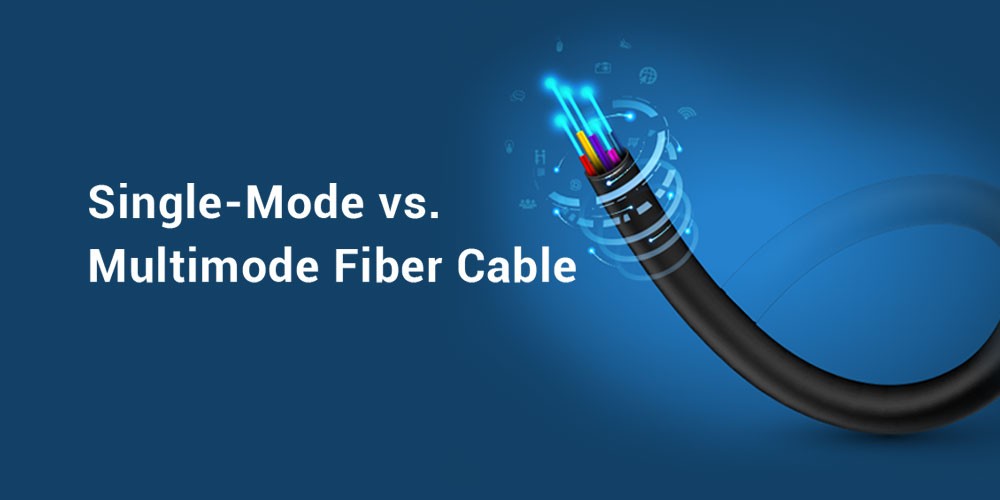
In fiber optic cabling, two primary types dominate the landscape: single-mode and multimode fiber cables. While both serve the purpose of transmitting data through light pulses, they differ significantly in their characteristics, applications, and cost considerations. Understanding these distinctions is crucial for selecting the most suitable fiber optic cable.
Core Diameter
The fundamental difference between single-mode and multimode fibers lies in their core diameter. As the name suggests, single-mode fiber allows only a single light mode to propagate through its core, typically around 9 microns in diameter. This narrow core ensures minimal signal distortion and enables long-distance transmission of high-bandwidth data.
In contrast, multimode fiber has a larger core, ranging from 50 to 100 microns in diameter. This larger core permits multiple light modes to travel simultaneously, making it susceptible to signal attenuation over shorter distances. However, multiple light paths can lead to modal dispersion, degrading signal quality and limiting the transmission distance.

Distance Capabilities
Single-mode fiber excels in long-distance data transmission, achieving distances of up to 140 kilometers without signal amplification. This makes it the preferred choice for inter-building and long-haul networks. On the other hand, multimode fiber is designed for shorter distances, typically up to 2 kilometers, making it suitable for intra-building applications and data centers.
Bandwidth Capacity
Due to its single-light mode, single-mode fiber offers superior bandwidth capabilities compared to multimode fiber. It can support data rates of up to 100 gigabits per second (Gbps) and beyond, catering to the ever-increasing bandwidth demands of modern applications. While still capable of carrying high-speed data, Multimode fiber reaches its bandwidth limit sooner, with maximum speeds ranging from 10 Gbps to 400 Gbps, depending on the specific fiber type.
Cost Considerations
Various factors, including core diameter, cable length, and transceiver compatibility, influence the cost of fiber optic cabling. In general, single-mode fiber is slightly more expensive than multimode fiber due to its more complex manufacturing process and higher-cost transceivers. However, the long-term benefits of single-mode fiber, such as its greater distance and bandwidth capabilities, may justify the initial investment.
Application Landscape
The choice between single-mode and multimode fiber ultimately depends on the application's requirements. Single-mode fiber is preferred for long-distance networks, high-bandwidth applications, and future-proofing. In contrast, multimode fiber is more suitable for shorter-distance applications, where cost-effectiveness is a priority.
Here's a summary table highlighting the key differences between single-mode and multimode fiber:
| Feature | Single-Mode Fiber | Multimode Fiber |
|---|---|---|
|
Core Diameter |
9 microns |
50 to 100 microns |
|
Distance Capabilities |
Up to 40 kilometers |
Up to 2 kilometers |
|
Bandwidth Capacity |
Up to 100 Gbps and beyond |
10 Gbps to 400 Gbps |
|
Cost |
Slightly more expensive |
Slightly less expensive |
|
Applications |
Long-distance networks, high-bandwidth applications |
Shorter-distance applications, cost-sensitive applications |
Conclusion
The decision between single-mode and multimode fiber requires careful consideration of the specific network requirements, including distance, bandwidth, and budget. For long-distance, high-bandwidth applications, single-mode fiber is the clear choice. However, multimode fiber may be suitable for shorter-distance applications where cost is a primary concern.
By understanding the nuances of each fiber type and aligning them with your specific needs, you can make an informed decision that ensures your network infrastructure can meet the demands of today and the challenges of tomorrow.
At Omnitron, we understand that network design is essential to any successful IT infrastructure. That's why we offer free network design services to our customers. Our experienced network engineers will collaborate with you to develop a comprehensive design that meets your unique needs, budget and time limit. Get a quote for free network design.

